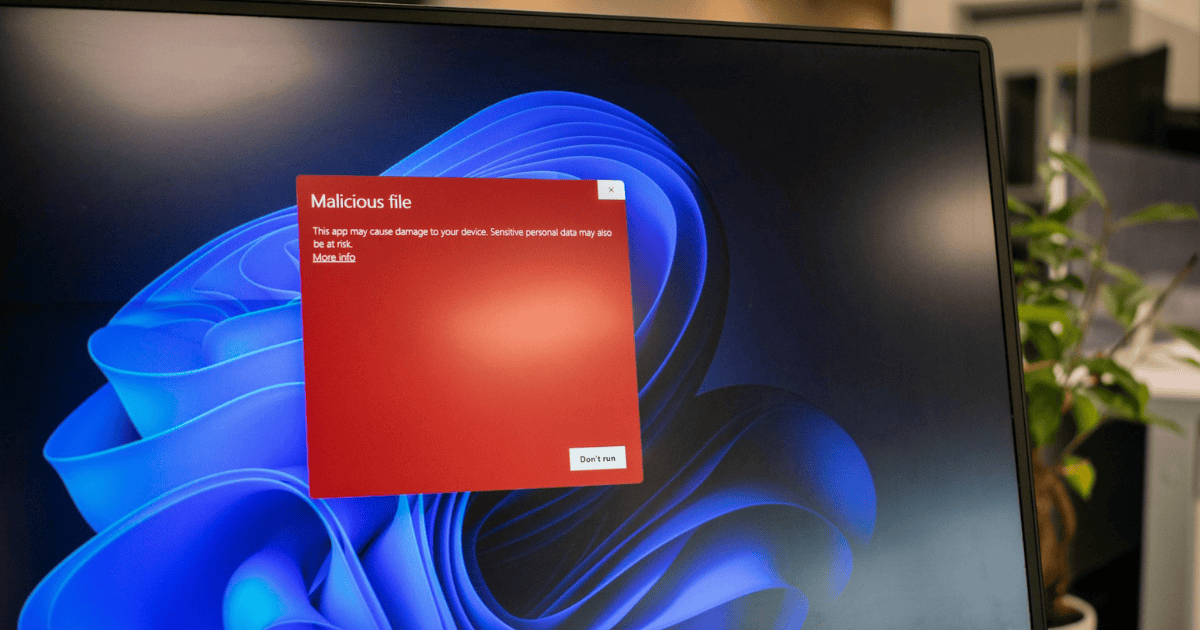Last Updated on 7 February 2024 by Alastair Digby
In the age of attack surface expansion, securing IT assets is no longer optional—it’s a necessity. IT and cybersecurity leaders must protect their organisation’s digital assets from increasing cyber threats. Cybersecurity Ventures predicts that cybercrime will cost the world $10.5 trillion annually by 2025, according to their report. This underscores the importance of having a robust security strategy in place.
In this article, we will look at the importance of securing IT assets and the various approaches you can take to improve your digital security posture.
Table of Contents
Understanding IT Assets
IT assets are any information or data that is valuable to an organisation. This includes hardware like servers and computers, software like your website or email system, and data, which could be anything from customer information to intellectual property.
The Importance of Securing IT Assets
Securing these assets is crucial for several reasons:
- Preventing Data Breaches: Unsecured IT assets are a prime target for cybercriminals. A data breach can lead to significant financial losses and damage to an organisation’s reputation.
- Regulatory Compliance: Many industries have regulations that require businesses to protect certain information. Failure to secure IT assets can result in hefty fines and penalties.
- Maintaining Business Continuity: A cyber attack can disrupt business operations, leading to lost revenue, lost work time or even in extreme cases life-threatening.
Inventory of IT Assets
Hardware Components
The first step in understanding your IT assets is to take an inventory of all your hardware components. This includes servers, computers, printers, routers, and any other physical devices that are part of your IT infrastructure.
It’s important to document the make, model, and specifications of each hardware component. Additionally, record the location of each device and who is responsible for it. This information will be invaluable when planning upgrades, troubleshooting issues, and managing your IT budget.
Software Applications and Systems
In addition to hardware, your IT assets also include software applications and systems. This includes operating systems, databases, office productivity software, email systems, and any industry-specific applications your organisation uses.
For each software application, document the version number, license information, and the number of users. Also, keep track of any customizations or configurations that have been made. This helps you follow software licensing rules and handle software updates and patches efficiently.
Software applications should also include the use of SaaS applications. Tracking the use of these may be difficult due to staff using unauthorized SaaS applications. However, the use of technology such as Cloud Asset Security Brokers (CASBs) could help.
Cloud Services
Cloud assets encompass IT resources hosted in the cloud, including virtual machines (VMs), databases, storage buckets, and serverless functions. VMs are software emulations of physical computers, running an operating system and applications. Cloud-based databases are popular for their scalability and ease of management, while storage buckets provide flexible and scalable data storage over the Internet. Serverless functions, which run in response to events and automatically manage their required resources, are integral to many modern cloud architectures.
Despite being hosted off-site, cloud assets are a crucial part of your IT infrastructure and must be secured and managed like any other IT asset. This includes regular updates, patching, and monitoring for any unusual or suspicious activity. Access to these assets should be strictly controlled, and data should be encrypted both at rest and in transit.
Including cloud assets in your IT asset inventory provides a complete picture of your organisation’s IT environment, enabling the development of a comprehensive and effective security strategy. Remember, securing these assets is as important as securing physical hardware and on-premises software applications.
Categorising Assets Based on Criticality and Sensitivity
Once you have a comprehensive inventory of your IT assets, the next step is to categorise them based on their criticality and sensitivity.
Criticality refers to how important an asset is to your organisation’s operations. A website server can be seen as being more important than a regular office computer for tasks like hosting your website.
Sensitivity, on the other hand, refers to the nature of the data that the asset holds. An asset is considered sensitive if it stores or processes data that is confidential or regulated, such as customer information, financial data, or health records.
By categorising your IT assets in this way, you can prioritize your resources and efforts towards protecting the most critical and sensitive assets. This is a key step in managing IT risks and ensuring business continuity.
External Attack Surface Management (EASM)
Recently, more people have begun using external attack surface management to help them identify and safeguard internet-facing assets that may pose a risk. Modern offensive security programs now have EASM as a crucial component of the security stack, with some (like Informer) including integrated pen testing alongside automated vulnerability findings. Let’s look at why using EASM should be on your radar.
Identifying and Mapping External Attack Surfaces
The first step in managing your external attack surface is to identify and map all the potential entry points into your network. This involves conducting a thorough audit of your IT infrastructure and applications to identify all internet-facing assets.
Once identified, these assets should be mapped to understand their interconnections and dependencies. This mapping process helps in visualizing the attack surface and is crucial for prioritizing security measures.
Tools and Methodologies for Effective Management
There are several tools and methodologies that can be used in combination to help aid external attack surface management. These include:
- Vulnerability Scanners: These tools can automatically scan your network for known vulnerabilities that could be exploited by attackers.
- Penetration Testing: This involves simulating cyber attacks on your network to identify vulnerabilities and test your defences.
- Threat Intelligence Platforms: These platforms provide real-time information about emerging threats and can help you avoid potential attacks.
- Security Information and Event Management (SIEM) Systems: These systems collect and analyse security-related data from across your network, helping you detect and respond to security incidents more quickly.
EASM is a vital component of an organisation’s cybersecurity strategy and increasingly organisations are adopting dedicated EASM software to secure IT assets. Whilst you can achieve a good level of coverage using a range of tools independently, it can be time-consuming, a challenge to manage effectively and the potential for gaps.
Penetration Testing Strategies
Penetration testing remains a critical practice that helps organisations identify vulnerabilities in their systems and networks. Leveraging the expertise of skilled ethical hackers is essential to reduce vulnerabilities that could be exploited in the wild. Despite advancements in automated pen testing tools, they still can’t replace or replicate the mindset and approach of a skilled pen tester.
Purpose and Benefits of Penetration Testing
Penetration testing, also known as pen testing, is a simulated cyber attack against your IT environment to check for exploitable vulnerabilities. The purpose of penetration testing is to identify weak spots in an organisation’s security posture, as well as measure the compliance of its security controls and policies.
Penetration testing is a tried and tested offensive security practice widely used for many years. At a high level it helps organisations to:
- Identify vulnerabilities before attackers do.
- Understand the level of risk associated with different types of threats.
- Test the ability of network defenders to successfully detect and respond to attacks.
- Meet compliance requirements and avoid fines associated with non-compliance.
- Maintain trust with customers and stakeholders by demonstrating a commitment to security.
Choosing the Right Type of Penetration Testing for Your Organisation
There are several types of penetration tests, each designed to analyse a specific aspect of your security posture. The right type for your organisation depends on your specific security objectives. Here are a few types:
- Infrastructure Pen Tests: These tests are designed to identify vulnerabilities in your internal or external infrastructure.
- Application Pen Tests: These tests focus on identifying vulnerabilities in web, API or mobile applications.
- Client-Side Tests: These tests target client-side software like browsers and document readers.
- Wireless Network Pen Tests: These tests look for vulnerabilities in your wireless networks.
It’s important to choose the type of penetration test that aligns with your organisation’s risk profile and regulatory requirements.
Collaborating with External Penetration Testing Services
Whilst some organisations have the resources to conduct penetration testing with internal resources, many choose to collaborate with external penetration testing services. These services bring a fresh perspective to your security posture, as they are not constrained by any preconceived notions about your network.
External penetration testing services also bring a high level of expertise and access to specialized tools and techniques. They can provide a more comprehensive and objective assessment of your security posture, helping you understand your vulnerabilities and how to address them.
At Informer, one of the most valuable phases of an engagement is the post-test debrief. This provides a valuable opportunity for our clients and the pen testing team to talk about the test, provide insights on remediation and allow IT and security teams to ask any questions.
Pen testing will continue to be a crucial component of a robust cybersecurity strategy for years to come. There are a range of factors and compliance considerations that feed into the frequency and types of pen tests you’ll need. As a minimum, you should be testing your external-facing web applications and infrastructure annually.
Implementing Strong Access Controls
Implementing strong access controls is crucial for protecting sensitive data and maintaining the integrity of your IT systems. In particular, there are three key strategies: Role-Based Access Control (RBAC), Multi-Factor Authentication (MFA), and regular review and update of access policies that should be implemented as standard.
Role-Based Access Control (RBAC)
Role-Based Access Control (RBAC) is a method of managing access to your IT resources based on the roles of individual users within your organisation. In RBAC, permissions are associated with roles, and users are assigned roles, thus users gain permissions indirectly based on their roles.
RBAC provides several benefits. It simplifies access management, improves security by ensuring users have the minimum necessary access, and makes auditing easier by providing a clear link between users and their access.
Multi-Factor Authentication (MFA)
Multi-Factor Authentication (MFA) is a security measure that requires users to provide two or more verification factors to gain access to a resource. These factors can include something you know (like a password), something you have (like a smart card), and something you are (a biometric like a fingerprint).
MFA significantly enhances security by making it more difficult for unauthorized users to gain access, even if they have obtained one of your authentication factors. It is handy for protecting sensitive data and high-risk access points
Regularly Reviewing and Updating Access Policies
Regular review and update of access policies is a critical part of access control. As your organisation evolves, so do your access needs. Users may change roles, new applications may be introduced, and old ones may be decommissioned.
Regular reviews ensure that your access policies reflect your current needs and that users have the appropriate level of access. This not only enhances security but also ensures that users can perform their jobs effectively without unnecessary access restrictions.
Implementing strong access controls is a multi-faceted process that involves RBAC, MFA, and regular review and update of access policies. By employing these strategies, you can significantly enhance the security of your IT systems and protect your valuable data.
Network Security Measures
In the era of digital transformation, network security is a top priority for every organisation. Key network security measures including firewall configurations, Intrusion Detection and Prevention Systems (IDPS), and encryption of sensitive data in transit all play an important part in keeping your information secure.
Firewall Configurations and Best Practices
Firewalls serve as the first line of defence in network security by controlling incoming and outgoing network traffic based on predetermined security rules. Here are some best practices for firewall configurations:
- Default Deny: All incoming traffic should be blocked by default and only allowed if it meets the defined security criteria.
- Principle of Least Privilege: Only the necessary network services should be exposed and run on systems.
- Regular Updates and Patches: Firewalls should be regularly updated and patched to protect against known vulnerabilities.
Intrusion Detection and Prevention Systems (IDPS)
Intrusion Detection and Prevention Systems (IDPS) are crucial for network security. They monitor network and system activities for malicious activities or policy violations and report them to management systems.
There are two types of IDPS: Network-based (NIDPS) and Host-based (HIDPS). NIDPS monitors the entire network for suspicious traffic by analyzing traffic packets, while HIDPS monitors a single host for suspicious activity.
Encrypting Sensitive Data in Transit
Encrypting sensitive data in transit is a critical network security measure. It ensures that even if data is intercepted during transmission, it cannot be read or altered.
Protocols such as Secure Sockets Layer (SSL), Transport Layer Security (TLS), and Internet Protocol Security (IPSec) can be used to encrypt data in transit. These protocols provide end-to-end encryption, ensuring that data remains secure from the point of transmission to the point of receipt.
Network security measures are essential to protect an organisation’s IT infrastructure. By implementing robust firewall configurations, utilizing IDPS, and encrypting sensitive data in transit, organisations can significantly enhance their network security posture.
Regular Audits and Assessments
In the realm of cybersecurity, regular audits and assessments are crucial for maintaining a robust security posture. It’s important to conduct internal security audits, engage third-party assessments, and use these findings to improve your overall security posture.
Conducting Internal Security Audits
Internal security audits are a key component of an organisation’s cybersecurity strategy. These audits involve a thorough examination of the organisation’s IT systems and processes to identify any potential vulnerabilities or non-compliance with security policies.
The benefits of conducting internal security audits include:
- Identifying gaps in your security measures before they can be exploited.
- Ensuring compliance with regulatory requirements.
- Providing a basis for continuous improvement in your security posture.
Engaging Third-Party Assessments
While internal audits are important, engaging third-party assessments brings additional benefits. These assessments provide an unbiased view of your organisation’s security posture, as they are conducted by independent experts who are not influenced by internal politics or preconceived notions.
Third-party assessments can help:
- Validate the findings of your internal audits.
- Provide a different perspective on your security measures.
- Identify vulnerabilities that may have been overlooked internally.
Using Findings to Improve Overall Security Posture
The ultimate goal of conducting audits and assessments is to use the findings to improve your overall security posture. This involves:
- Prioritizing the identified vulnerabilities based on their potential impact.
- Developing a plan to address each vulnerability.
- Regularly review and update your security measures based on the findings.
Regular audits and assessments, both internal and third-party, are crucial for maintaining a robust security posture. By effectively using the findings from these audits and assessments, organisations can continuously improve their security measures and stay one step ahead of cyber threats.
Final Thoughts
In conclusion, securing IT assets requires a multi-faceted approach. By understanding your assets, managing external attack surfaces, conducting penetration testing, implementing strong access controls, securing networks, prioritizing employee training, and having a well-defined incident response plan, IT and cybersecurity leaders can strengthen their organisation’s security posture. Regular audits and assessments ensure ongoing vigilance in an ever-changing cybersecurity landscape.
Frequently Asked Questions
Why is securing IT assets crucial in today’s digital landscape?
Securing IT assets is vital to protect organisations from evolving cyber threats. IT assets, including hardware and software and cloud, store sensitive information, making them potential targets for malicious actors. A robust security strategy helps safeguard against unauthorized access and data breaches.
What is external attack surface management, and why is it important?
External attack surface management involves identifying and securing potential entry points for cyber threats. It is crucial because understanding and managing these surfaces enhances the organisation’s overall security posture, reducing vulnerabilities and potential attack vectors.
How can penetration testing benefit my organisation?
Penetration testing is a proactive approach to identifying vulnerabilities in your systems. Simulating real-world attacks, helps organisations strengthen their defences, prioritize security efforts, and mitigate potential risks before they can be exploited by malicious actors.
How does network security contribute to overall IT asset protection?
Network security involves configuring firewalls, using Intrusion Detection and Prevention Systems (IDPS), and encrypting sensitive data in transit. These measures help prevent unauthorized access, detect and block potential threats, and secure data as it travels across the organisation’s network.
How often should organisations conduct audits and assessments of their IT security?
Regular audits and assessments are recommended, ideally on an annual basis or more frequently based on the organisation’s risk profile. This ensures that security measures are up-to-date, and vulnerabilities are promptly identified and addressed.





